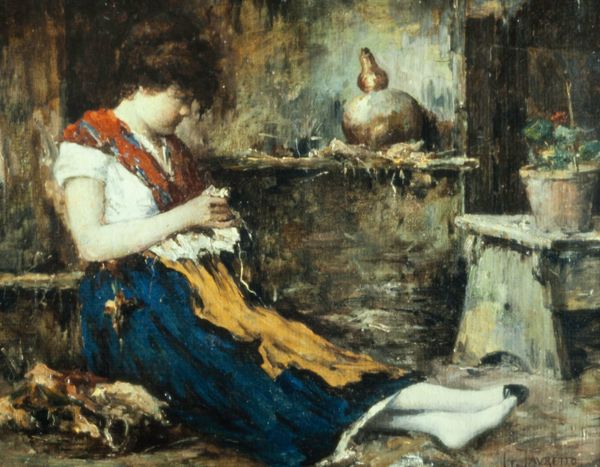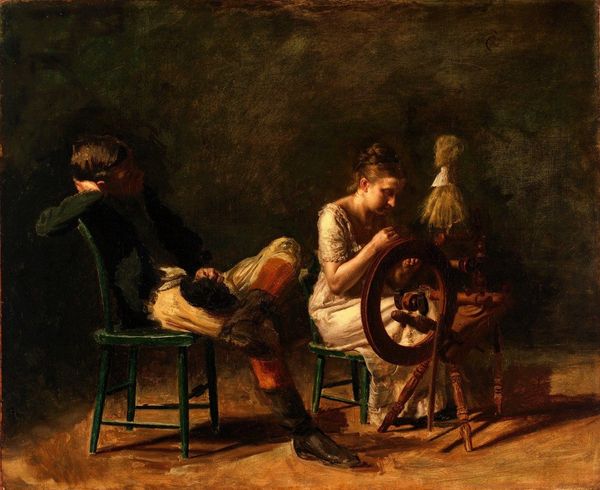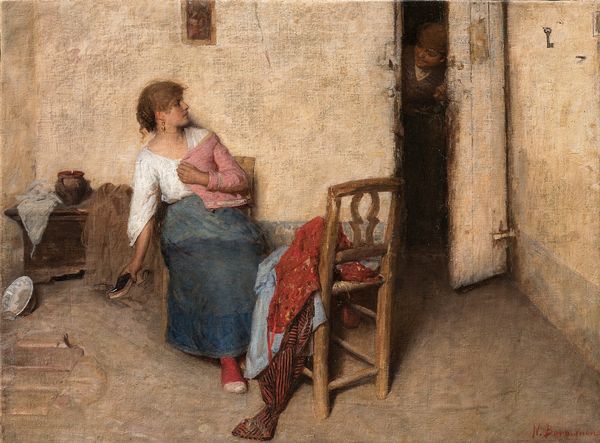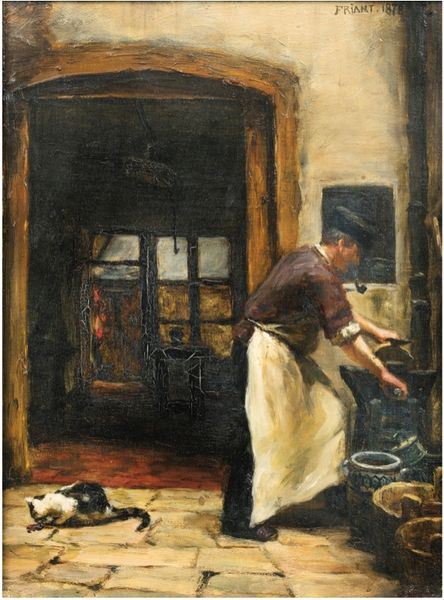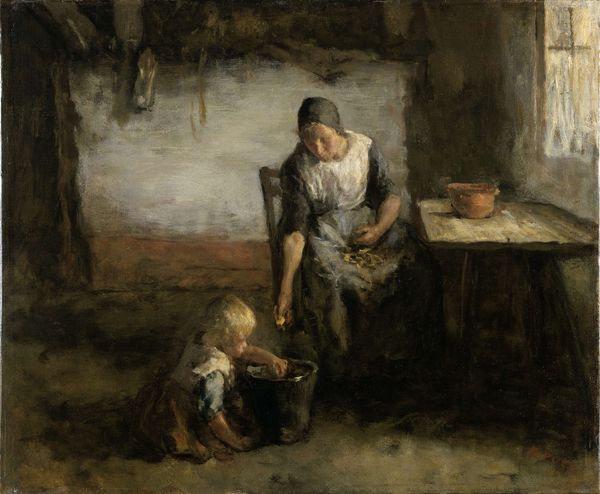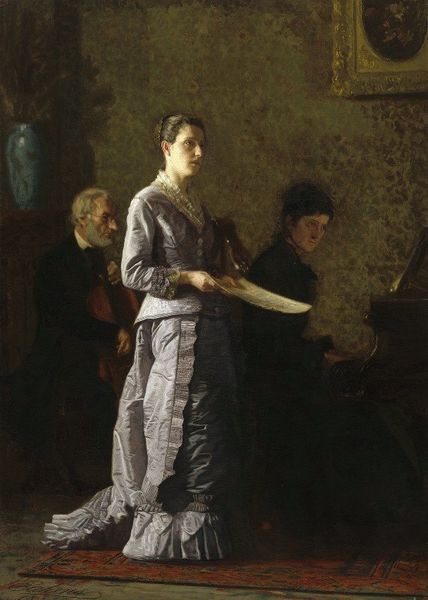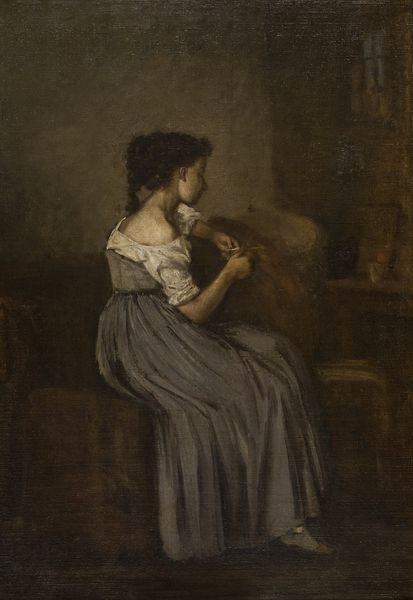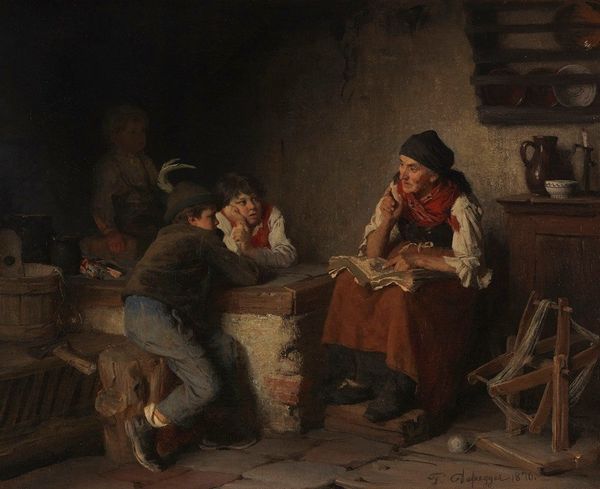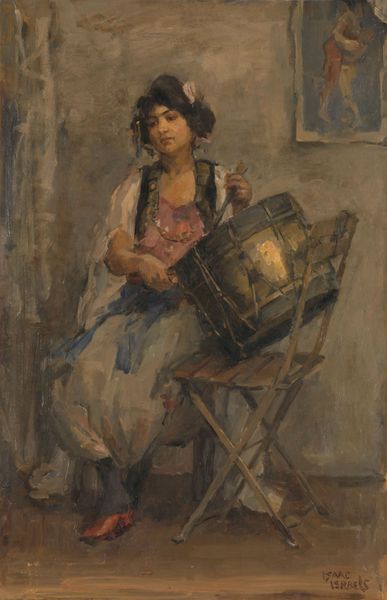
painting, oil-paint
#
figurative
#
painting
#
oil-paint
#
charcoal drawing
#
figuration
#
charcoal art
#
oil painting
#
painting painterly
#
genre-painting
#
realism
Copyright: Public Domain: Artvee
Gustave Courbet made this sketch, Les cribleuses de blé, in France, likely during the 1850s, using oil paint on canvas. It depicts three figures engaged in the laborious task of sifting wheat. The painting creates meaning through its earthy tones and realistic depiction of rural life, a deliberate challenge to the romanticized and idealized imagery favoured by the French Academy. Courbet, a leading figure in the Realist movement, aimed to portray the unvarnished realities of working-class life, reflecting the socio-political ferment of mid-19th-century France. The French Second Republic, with its brief embrace of socialist ideas, had recently collapsed, giving way to the more conservative Second Empire. Courbet's choice of subject matter, focusing on the dignity of labor, can be read as a critique of the prevailing social order. To understand Courbet’s project fully, scholars delve into archives, letters, and period publications. The art historian's role is to illuminate how cultural context shapes both the creation and reception of art, demonstrating that meaning is not fixed but emerges from a dynamic interplay between artwork, artist, and society.
Comments
No comments
Be the first to comment and join the conversation on the ultimate creative platform.

